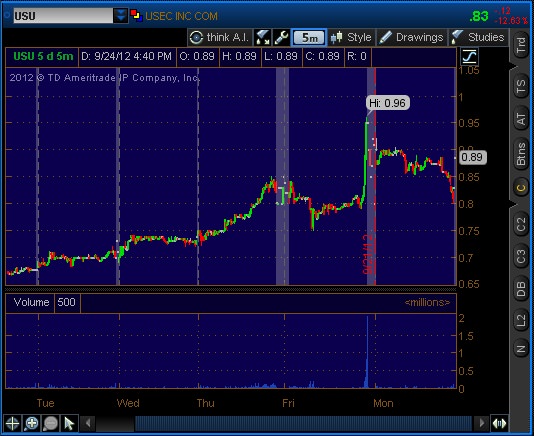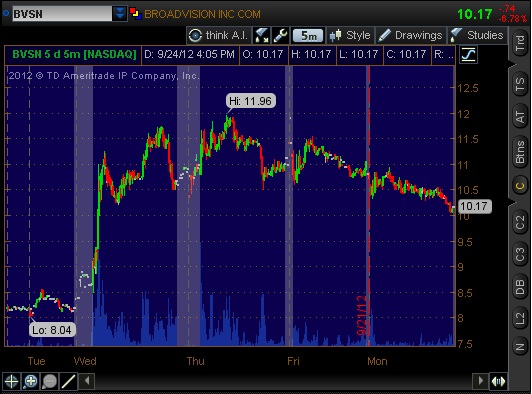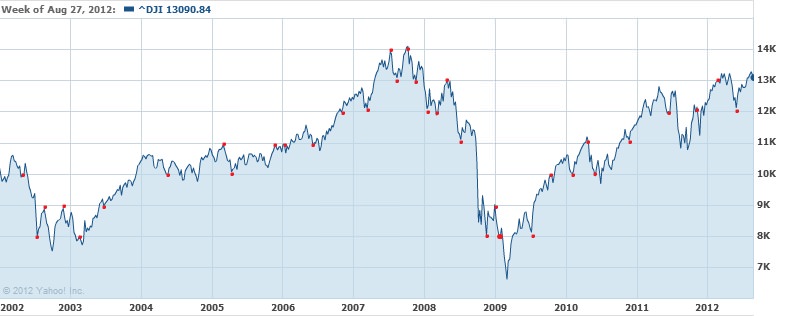Lots of Potential Tomorrow
The S&P and Dow, both after breaking multi-year highs, have fallen back down to test that price level this week, and today’s price action seems to indicate support is holding. Gold and Silver continue to creep up to a key level. I’ve been waiting for gold to break $1800 simultaneous with silver above $35 as a buy signal, but often their breakouts begin early based on intra-day or intra-week technical levels. Tomorrow has better than even odds of being the day everything starts to move upwards again, but if prices aren’t moving, patience is key. Wait to see which key levels prices approach, and use gold and silver as confirmations on one another, and the Dow and S&P likewise.
$BVSN spiked today like I feared, so I’m glad I covered yesterday, and this could create another great shorting opportunity.
$USU right now looks like it’s going to take its time, so patience is key here. I exited my Puts because even though USU dropped from my entry point, it did not drop enough, and I risk losing time premium. Recall I thought 75 cents would be a key price level. All day yesterday, the stock traded within 4 cents of that level. Today it’s creeped up some, but there’s no clear breakout above the range and volume is lacking. Last week’s breakout over .85 if you look back in hindsight actually began to run at 82 cents. I would consider treating 82 cents as a key price level, but only if the volume picks up some or the direction is clear.
On the down side, I’d look at a fall below 70 cents as troublesome for this stock price, however the downside from there would be limited since the ran-up began from 50 cents. A total market breakout may be a catalyst for a USEC Inc breakout, but I’d rather be in Silver or Gold under that scenario. Up or down, this one will be on my back burner for now, but not forgotten.





Recent Comments